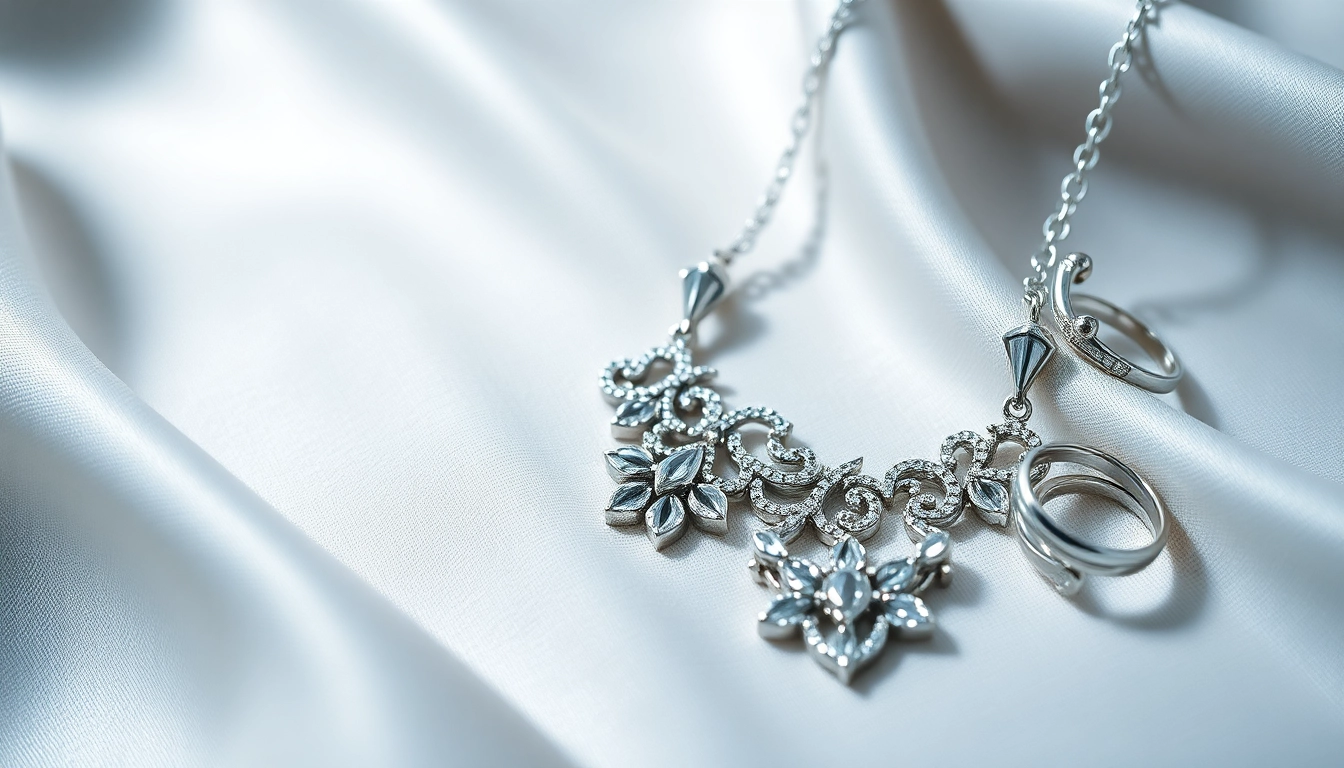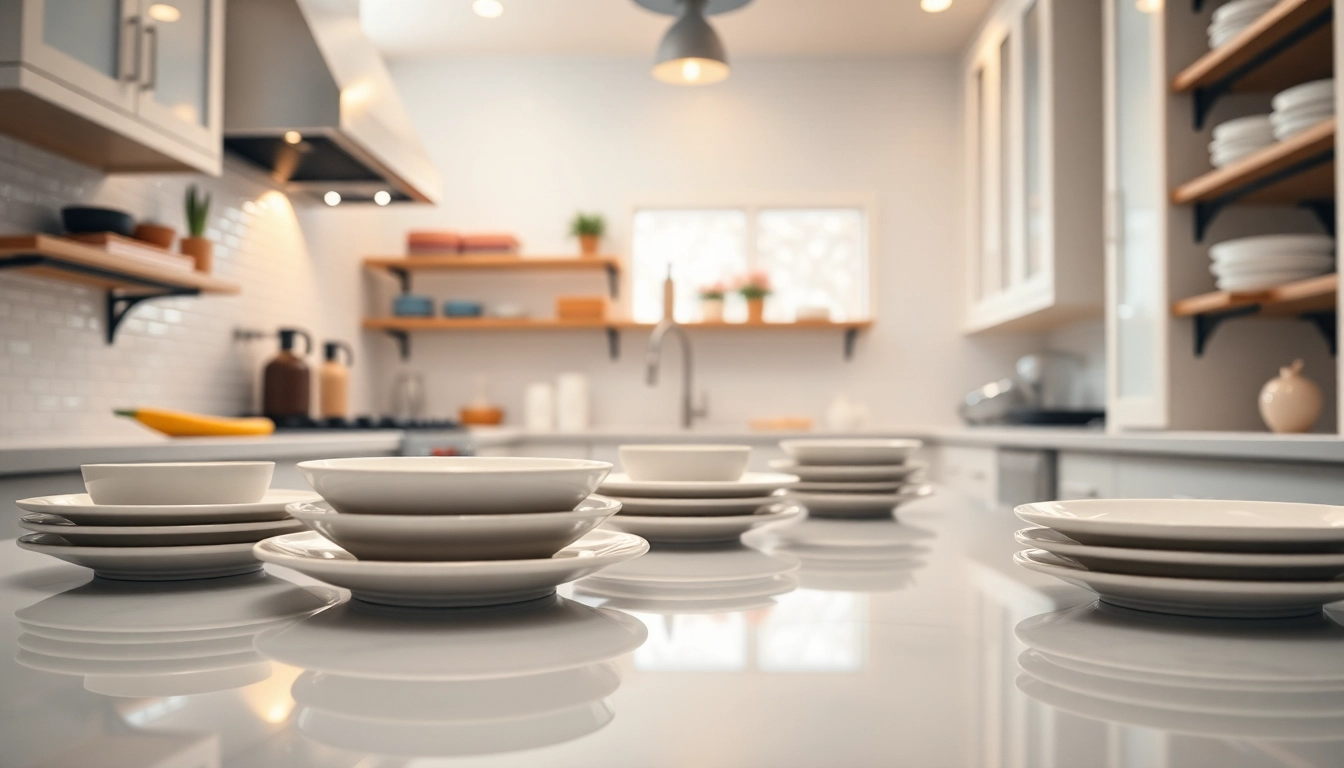Understanding Silver Jewelry: Types and Quality
Silver jewelry has captivated humans for centuries, its shimmering surface and flexible design possibilities appealing to a wide audience. While exploring the world of silver jewelry, it is important to understand the different types available, their quality metrics, and what makes silver a preferred choice for ornaments over other metals. Whether you’re a seasoned collector or just starting to explore your options, silver jewelry offers something for everyone.
The Allure of Sterling Silver vs. Other Metals
Sterling silver, made up of 92.5% silver and 7.5% other metals (typically copper), stands out markedly among other metal options such as gold, platinum, or stainless steel. This unique composition gives sterling silver its distinctive sheen and durability. Unlike pure silver, which is too soft for practical jewelry use, sterling silver balances softness and resilience, making it ideal for crafting rings, necklaces, bracelets, and more.
Compared to gold and platinum, sterling silver offers a more accessible price point, inviting a broader range of consumers. Moreover, the cool, luminous glow of silver complements a variety of skin tones—a feature that many attribute to its universal appeal. Additionally, silver jewelry can effortlessly blend with gemstones, which enhances its aesthetic charm.
Recognizing Authentic Silver Jewelry
Identifying authentic silver jewelry is crucial, especially in a market rife with alternatives posing as genuine silver. To ensure you are purchasing real silver, always look for the 925 stamp—a mark signifying at least 92.5% silver content. You might also encounter other markings such as “sterling” or “ster.”
In addition to checking for stamps, consider seeking out detailed product descriptions or asking jewelers for authenticity certificates, particularly for high-value items. Being aware of common terms associated with silver can aid in enhancing your purchasing knowledge; for instance, “plated” denotes a thin layer of silver on less valuable metal, while “filled” or “bonded” indicates a thicker layer of silver adheres to another metal.
Craftsmanship: What Makes Silver Jewelry Stand Out?
The artistry behind silver jewelry plays a key role in its appeal. Expert craftsmanship demonstrates not only skill but also creativity, resulting in one-of-a-kind pieces ranging from minimalistic designs to intricate artworks. Highly skilled artisans often incorporate various techniques such as hammering, casting, and engraving to craft unique textures and finishes.
The quality of craftsmanship can also be determined through weight, as well-manufactured jewelry should feel substantial without being overwhelmingly heavy. Additionally, fine details like polished edges and seamless joins signify quality craftsmanship and add to the overall aesthetic and durability of the pieces.
Styling Tips for Silver Jewelry
Beyond their intrinsic beauty, silver jewelry pieces also allow for seamless integration into everyday outfits and special occasions. Here are several styling tips to enhance your look with silver accessories.
Pairing Silver Jewelry with Outfits
Silver jewelry’s versatility allows it to pair excellently with various styles, from casual to formal wear. For instance, wearing understated silver stud earrings with a classic white shirt can create a polished look perfect for office settings. Conversely, bold statement pieces—like a chunky silver necklace or multi-layered bracelets—can elevate even the simplest of outfits during night outs or special occasions.
Layering is a particularly effective technique when it comes to styling silver jewelry. Mixing multiple chains of varying lengths adds depth and dimension to your outfit. However, balance is key: If you opt for elaborate earrings, consider simplifying necklaces to avoid overwhelming your ensemble with too much noise.
Mixing Silver with Other Jewelry Materials
Integrating silver jewelry with other metals can create an eye-catching aesthetic. Gold, rose gold, or bronze can harmonize beautifully with silver, resulting in a fresh and contemporary look. Mixing materials allows for creativity; for instance, stacked rings featuring a combination of gold and silver can achieve a balanced and personalized vibe.
A word of caution, however: while layering various materials, ensure the pieces complement each other in terms of style and weight—the contrast enhances visual appeal but should not clash. Understanding color palettes also helps in crafting a cohesive look; warm tones with warmer metals and cool tones with silver often yield favorable results.
Occasion-Specific Silver Jewelry Styling Recommendations
Selecting silver jewelry for specific occasions requires an understanding of the event’s tone. For formal events, opt for elegant, refined pieces such as drop earrings or delicate necklaces embellished with gemstones. These can add an air of sophistication while letting your outfit shine.
For casual outings or daytime events, playful or bohemian styles can be embraced. This may include silver bangles, layered bead necklaces, or silver rings stacked on various fingers for a fun and relaxed aesthetic. Additionally, festivals or beach events encourage experimentation; consider wearing colorful outfits paired with minimal silver jewelry to maintain a cohesive yet vibrant look.
Caring for Your Silver Jewelry
To maintain the beauty and longevity of your silver jewelry, proper care is essential. The following sections detail optimal practices that can help extend your jewelry’s lifespan.
Proper Cleaning Techniques to Maintain Shine
Silver is prone to tarnishing when exposed to air, moisture, and certain chemicals. Regular cleaning is vital to preserving its shine and preventing discoloration. A mild soap solution is often effective; simply mix warm water with a few drops of dish soap, using a soft cloth to clean the jewelry gently.
For more stubborn tarnish, a specialized silver polish or cleaning cloth can prove beneficial. Alternatively, a paste made from baking soda and water can be applied; gently buffing the surface can help restore luster. Avoid using abrasive materials which may scratch the silver. Lastly, rinse with clean water and dry thoroughly to prevent water spots.
Storing Silver Jewelry to Prevent Damage
Storing silver jewelry correctly is essential for minimizing scratches and tarnishing. When not in use, keep your pieces in a soft pouch or individual compartments to avoid tangling and scratching. Opt for anti-tarnish pouches or cloths; these specially coated materials can absorb moisture and prevent tarnishing.
Temperature and humidity control also matter when storing silver jewelry. Keeping items in a cool, dry area away from direct sunlight will preserve its quality. Avoid storing silver jewelry in the bathroom, where humidity can be high and may promote tarnishing.
Handling and Wearing Tips for Longevity
Certain practices during handling and wearing can prolong your silver jewelry’s lifespan. Removing jewelry before showering, swimming, or engaging in physical activities can considerably reduce exposure to harmful substances. Additionally, avoid contact with chemicals such as perfumes, lotions, and cleaning agents, as these can lead to tarnishing.
When wearing silver jewelry, consider its fit; rings that are too tight can lead to stress and may break, while overly loose pieces may be prone to loss. Regular inspections for any signs of wear can help identify areas needing professional attention, ensuring your silver pieces remain as exquisite as they were on day one.
Where to Buy Quality Silver Jewelry
Knowing where to purchase quality silver jewelry is essential in ensuring you invest wisely. Here are some aspects to consider when seeking out reputable retailers.
Evaluating Reputable Retailers
Whether you are shopping online or in-store, purchasing from reputable retailers is paramount. Check for customer reviews, return policies, and warranty information; these elements can provide insight into the retailer’s reliability. Look for retailers with a clear commitment to quality—many established brands offer certificates of authenticity with their higher-end silver pieces.
Additionally, visiting local artisan fairs or galleries can provide unique pieces crafted with care. Personal connections often yield exquisite options that large chain stores may not offer. Engaging directly with artisans can also add emotional value to your purchase, as you often learn the story and expertise behind each piece.
Online vs. In-Store Shopping for Silver Jewelry
Both online and in-store shopping experiences come with their pros and cons. Online shopping provides a broader selection, competitive pricing, and the convenience of shopping from home. Many distinguished retailers offer online purchasing options, complete with customer service assistance to guide you through your selection.
In contrast, purchasing in-store allows for a tactile experience; handling the jewelry lets you assess the weight, craftsmanship, and aesthetics up close. Stores often have professionals to assist you with questions and recommendations, allowing for a more tailored shopping experience. To maximize benefits, consider blending both approaches: Researching online and then visiting local stores.
Understanding Pricing: How to Spot a Good Deal
Determining a good deal on silver jewelry requires understanding common pricing structures and potential red flags. Researching the standard prices for similar pieces—taking into consideration the quality, weight, and craftsmanship—can guide your expectations.
In general, prices can vary based on design intricacies and brand prestige; however, huge discrepancies may signpost subpar quality or misrepresentation of authenticity. Additionally, clear insights into the quality of silver—such as its purity and craftsmanship—are crucial when evaluating worth. Don’t shy away from asking questions; reputable retailers should willingly communicate product details.
Trends in Silver Jewelry Design
The silver jewelry market constantly evolves, reflecting innovations in design and changing consumer preferences. Notable trends include a return to bold statement pieces, sustainability practices, and personalized designs. Here we explore some of these exciting movements in silver jewelry design.
Modern Innovations in Silver Jewelry
Today’s jewelry designers are experimenting with mixed media and technology to create original pieces. Incorporating colored resins, natural elements, and even 3D printing is becoming more commonplace in contemporary designs. This innovation merges art with technology, resulting in unique pieces that resonate with modern jewelry lovers.
Moreover, sustainable practices are on the rise. Many brands focus on eco-friendly production methods, such as sourcing recycled metals, thereby gaining appeal among environmentally conscious consumers. Brands that prioritize these principles often highlight their approaches, making ethical purchasing easier.
Classic Styles vs. Current Trends
Despite the rise of modern innovations, classic designs continue to be favored by many. Timeless styles such as simple hoops, chains, and cocktail rings remain staples in silver jewelry collections. Classic designs offer versatility; they can easily transition from daywear to evening attire.
Current trends, while bold and varied, often draw inspiration from these classics. For example, chunky statement rings are being paired with delicate chains to combine traditional elegance with contemporary flair. Following these trends can enrich your jewelry collection while ensuring your pieces remain relevant and stylish.
Custom and Personalized Silver Jewelry Options
The popularity of personalized jewelry featuring names or meaningful dates has surged in recent years. Consumers are increasingly looking for pieces that provide a personal touch, leading many jewelers to offer customization options such as engraving, monogramming, or making one-of-a-kind pieces.
Custom silver jewelry often allows clients to collaborate with designers, ensuring each piece encapsulates personal stories or memories, thus transcending mere aesthetics. When exploring options, it’s important to inquire about the associated costs and time frames, as custom projects can vary significantly based on complexity.



